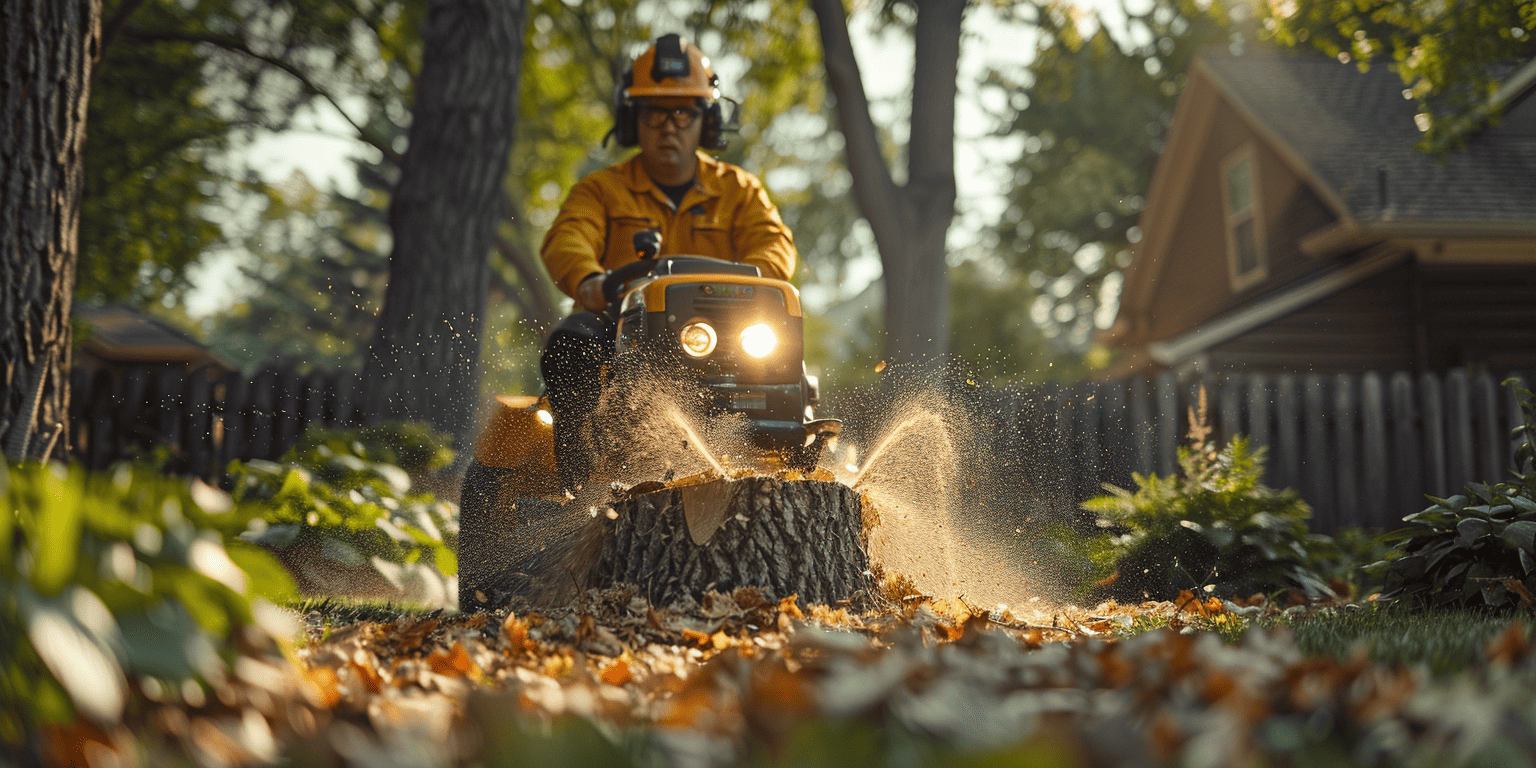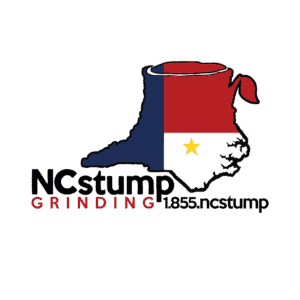Choosing the right stump grinder is key for efficiently removing tree stumps. The best stump grinder matches your needs in size, power, durability, and safety features. With many types of stump grinders available, it can be tricky picking the optimal one. This article will guide you in selecting stump grinding equipment based on the stump diameters you handle, space accessibility, desired portability, budget, and operator protection needs. We will cover critical factors like size, maneuverability, maintenance needs, comfort, and safety to help determine the ideal stump grinder that delivers robust grinding capacity at lower operating costs.
Size and Power of Stump Grinder

When trying to remove a tree stump from your yard, having the right stump grinder makes all the difference. You want one that can get the job done without costing too much or taking forever.
The first thing to look at is the usual size of stumps you’ll be working with.
Typical Stump Size
| Stump Size Considerations | Description |
|---|---|
| Stump Diameter | If most stumps are less than 36 inches across, a smaller grinder should work. Larger stumps require more power. |
| Wood Hardness | Oaks, hickories, and other hardwoods require more time to grind. Soft woods like pines are easier for a grinder to process. |
| Practical Considerations | Consider the largest stump size and wood hardness you’re likely to encounter. These factors help you choose an adequate grinder size and power level. |
Matching Power to the Job
| Stump Grinding Considerations | Description |
|---|---|
| Residential Stumps | For stumps less than 3 feet wide, a self-propelled unit with a 25-60 horsepower engine should work great; quick work of average size stumps without being overkill. |
| Larger Stumps | Upgrading to a more powerful 90 HP grinder is only necessary for massive stumps over 4 feet wide with a ton of thick roots; anything more is overkill for typical home use. |
| Grinding Wheel Size | The grinding wheel should be sized right, wide enough to reach big lateral roots around the edges of the stump, saving time as you won’t have to reposition as much to chew through them. |
Key Features for Durability
| Stump Grinding Equipment | Considerations |
|---|---|
| Metal guards around the grinding wheel | To prevent damage |
| A unit with a fully enclosed engine and belt area | To keep dust and debris from causing problems |
| An engine designed for high load capacity | To handle getting hot |
| Solid tires rather than air-filled | They can’t go flat, won’t waste time dealing with punctures and provide better traction in dirt and mud around stumps |
Ease of Maintenance
| Maximizing Grinding Uptime | Description |
|---|---|
| Quick Access | Quick access to filters, belts, and other parts that require regular maintenance is important. This allows for handling all the basic upkeep and getting back to work faster. |
| Sturdy Construction | Look for sturdy construction and easily serviceable components. Things like metal fuel tanks, tough welds, and simple controls last longer. |
| Simple Designs | When something does eventually wear out or break, simple designs make repairs cheaper and quicker. |
Safety Features
Operating a grinder safely should also factor into your choice.
Look for a unit with good visibility so you can always see what’s going on. And make sure to invest in proper PPE like a full face shield, hearing protection, steel-toe boots, gloves, and a particle mask.
Following good operating practices is crucial too – keep your hands and feet clear of the grinding wheel and roots, secure hair and clothing, and maintain your balance and footing at all times. Taking basic safety precautions goes a long way to preventing injuries.
Get Expert Guidance
If you’re feeling overwhelmed trying to pick the right stump grinder, consult an expert at your local equipment rental center or landscape supply dealer. They can point you towards models that fit your budget and typical stump sizes. And they’ll make sure you get all the protective gear and accessories needed to operate it safely.
With the right grinder matched to your needs, you’ll make quick work of stumps and get your yard cleared sooner. Taking time to choose equipment well suited to the job saves money, time, and headaches down the road.
Maneuverability and Portability
When looking for a stump grinder, one of the most important things to consider is how easy it will be to move around and access different areas.
Size and Weight
The size and weight of your stump grinder will directly impact how maneuverable it is. If you’ll mostly be working in tight spaces like backyards or near buildings, a smaller and more compact model is likely the best choice. Wheeled grinders that are less than 36 inches wide can easily fit through gates and down narrow paths. Their small size and light weight also makes them very portable – some can even be lifted into a truck bed by one person!
On the other hand, if you need to cover a large property or have lots of open space to work with, a self-propelled tracked stump grinder is a great option. These units are much wider and heavier, with some weighing over 1,500 pounds. But their tank-style treads allow them to climb hills and slopes up to 45 degrees, easily traversing rough or uneven terrain that would leave lesser machines stuck. Their power and torque also helps churn through huge stumps much faster.
Cutting Width
The actual width of the cutting wheel can also impact maneuverability. For getting into tight spaces near fences or foundations, you want the grinding wheel width to be as narrow as possible. Typically cutting widths range from 12 inches on smaller models up to 25 inches on heavy-duty commercial units. Just make sure to match the cutting width to the kinds of stumps you anticipate needing to remove.
Control and Handling
Another key component is how easy the unit is to control and handle as you maneuver it around a site. Smaller stump grinders designed for homeowner use will have basic manual controls and easier handling capabilities. Bigger skid-steer models are operated using the attachment controls inside the driver’s cab, allowing very precise control.
For the most flexibility, look at self-propelled walk-behind units. The dual steering control levers allow you to twist and turn on a dime, while still providing excellent visibility of the cutting wheel while you operate it. Models like Vermeer’s SC30TX even lets you switch between manual mode or remote control mode for getting into the tightest of spaces.
Proper operation takes experience and skill. Renting first can help you get a feel for different units before buying one. Always put safety first by wearing appropriate protective equipment when operating any type of stump grinding machine near people or property.
Getting Through Gates
When working in backyard type settings, you’ll inevitably need to get the stump grinder through fence gates or entrances. The easiest units to move in and out of fence gates have a cutting width 36 inches or less. Even some wider self-propelled units have retractable control panels to squeeze through tight spaces.
You’ll also want to account for managing curbs and side hills – a benefit tracked units have with their articulating frames and low center of gravity design. When estimating a job, take note of any access limitations or challenges ahead of time before hauling equipment to a site.
Fuel Efficiency
Operating a stump grinder takes a ton of power. That means fuel consumption should be a consideration when choosing equipment. In general, diesel engines offer greater fuel efficiency over gas engines – but can cost more upfront. Newer models also provide better efficiency through design improvements.
Things like electronic fuel injection, specialized carburetors, and turbocharging all help increase the power-to-fuel ratio. This keeps consumption rates optimal while maintaining strong performance. Features like auto idle and auto shutdown during inactive periods also save on wasted diesel. Ask your dealer about potential fuel savings for the models you are comparing. That efficiency can directly impact your operating costs over time.
In the end, only you can decide what size and type of stump grinder is right for your specific needs. Assess the terrain, tree sizes, accessibility factors and other scope considerations of your project. This helps determine the best features and capabilities required to achieve safety, productivity and ease of use goals. Then rent and test out different units firsthand to make the most informed equipment investment.
Durability and Maintenance Requirements
When picking out a stump grinder, you’ll want one that can stand up to tons of use without breaking down. Look for stump grinders made with thick steel frames and metal parts instead of plastic. Ask the dealer how much weight and grinding power their machines can handle compared to other brands too.
Engine Strength
Pay attention to the size and strength of the engine. Smaller engines wear out faster since they have to work extra hard grinding up tough stumps and roots. Bigger engines with more horsepower won’t have to strain as much. Make sure the engine has a cover or shield to prevent overheating as well. You want one that can run all day without quitting on you!
Look for machines with parts that are easy to reach, so you can clean or replace them yourself. Ask about changing the oil and filters and make sure you have the tools to do it. The easier it is to service the stump grinder, the more use you’ll get out of it. Compare warranties too – longer coverage for the engine and grinding parts mean the manufacturer stands behind their product.
Safety Features
Don’t forget to check for built-in safety features. All stump grinders should have emergency stop buttons that instantly cut power. Auto-braking if you take your hands off the controls and auto-reversing if the wheel gets jammed are important too. These features help prevent injuries when accidents happen. The best models even stop themselves if they tip over too far!
When choosing stump grinding equipment, the most durable and safest machines may cost more up front. But repairing or replacing grinders that break constantly costs way more over time. Spending a little extra now means it’ll last longer and let you get more jobs done without headaches. And you can’t put a price on safety for you and your crew!
Test drive any stump grinders before buying if you can. Make sure it feels sturdy and well-balanced. Listen for grinding wheels running smoothly without weird vibrations. Ask the dealer questions about reliability and maintenance needs too. Taking the time to pick the right equipment today saves you from problems tomorrow.
Operator Comfort and Safety Features
Stump grinders can be rough, noisy pieces of equipment. Operating one for hours at a time can take a physical toll on the body. That’s why it’s important to choose a model with comfort and safety features to protect yourself over the course of a long workday.
Adjustable Padded Seat
A thick, padded seat can make all the difference for operator comfort. Padding helps absorb vibration from the grinding action. Adjustability allows you to fine-tune the seat position to suit your height and reach. This prevents straining and discomfort from constantly working in an awkward posture. Some high-end stump grinders even have heated seats and lumbar supports for optimal comfort.
Anti-Vibration Mounts
Another way to reduce fatigue and strain is by using a machine equipped with anti-vibration mounts. These mounts isolate the main chassis from the engine and grinding arm. By dampening vibrations, less energy gets transferred into the operator platform. New stump grinders typically have some vibration dampening built-in. But you can also retrofit an older unit with anti-vibration mounts as an upgrade.
Tilt Steering
Angled or tilting steering wheels serve a similar purpose to adjustable seating. A tilt wheel lets you position the steering column to match your natural wrist angle. This prevents hyperextending the joints while maneuvering around a job site. Tilted steering also brings the controls closer to your body, reducing arm reach. As a result, operating the drive levers and switches feels less awkward and strained over time.
In addition to ergonomic controls, stump grinders should have adequate safeguards for debris and accidents.
Wheel Guards
Exposed wheels pose one of the biggest risks of injury on stump grinding equipment. Chunks of wood and rock can be flung outward at high speeds toward an operator’s legs during grinding. Enclosing the upper half of wheels in metal guards deflects debris away from the platform. This protection is now standard on most stump grinder models.
Cutting Wheel Shields
The cutting wheel itself also warrants shielding to prevent ejected particles. A sturdy steel cover over the top and sides of the cutting wheel contains wood shards and dust. Make sure any access doors have a safety interlock switch. This automatically disables the grinding wheel if a door is opened while it’s still spinning.
Slip-Resistant Platforms
Lastly, the operator platform should have grip tape or checkerplate metal flooring. This slip-resistant surface provides stable footing for the operator. Sudden slipping while operating controls could result in accidental engagement of drive functions or the cutting head. Proper flooring gives added insurance against slips.
Prioritizing comfort and safety means you’ll remain protected from fatigue, strain and debris when running a stump grinder all day long. Don’t neglect ergonomics and protective features when selecting new or replacement equipment. Your body will thank you over years of grinding stumps across countless jobsites.
Choose the Optimal Stump Grinder for Your Requirements
Selecting the most appropriate stump grinding machine is vital for safe and productive stump removal. Consider key factors like size, power, maneuverability, accessibility, and operator comfort based on your specific needs. For large commercial jobs, powerful self-propelled units offer strength and traction to grind huge stumps efficiently. For tighter residential spaces, compact walk-behind and vertical grinders provide maneuverability. Investing in a rugged, low-maintenance stump grinder that aligns with your grinding volumes and site conditions saves time and costs in the long run. For professional-grade stump removal services in Wake Forest, NC utilizing powerful Carlton SP stump grinders, contact the experts at NC Stump Grinding (1-855-627-8867) today for a quick complimentary estimate.


